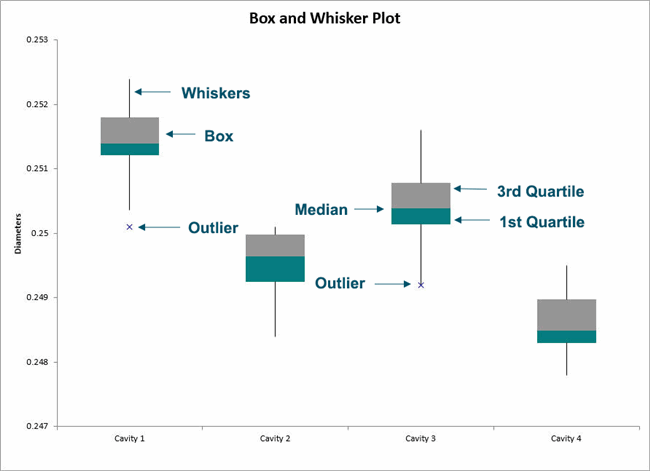

BOX AND WHISKER PLOT PERCENTAGES CALCULATOR CODE
For example, the code below is used to compare the distribution of age for booster training group and control group in the ACTIVE study. To do so, a formula is often used as input, such as y ~ group, where y is a numeric vector of data values to be split into groups according to the grouping variable group. Multiple boxplots can be put together for group comparison. One boxplot with annotated information is shown below. For some boxplot, the fence is plotted if outliers are identified. Then, if a value is smaller than the inner/lower fence (= 1st quartile - 1.5*IQR) or greater than the outer/upper fence (= 3rd quartile + 1.5*IQR), it is identified as a suspected outlier. First, the interquartile range (IQR) is calculated as the difference between the 3rd quartile and the 1st quartile. The suspected outliers are determined in the following way. In a boxplot, the following 5 values are plotted, median, 1st quartile, and 3rd quartile from all data as well as minimum and maximum after removing suspected outliers. Values plotted in a boxplot (five numbers and outliers) For example, the code below generates a boxplot for the age variable in the ACTIVE study. It also shows any data points which lie beyond the extremes of the whiskers. The plot shows the extreme of the lower whisker, the lower hinge, the median, the upper hinge and the extreme of the upper whisker. A boxplot is easily understood by users of statistics.Ī boxplot can be generated for a variable simply using the function boxplot().Boxplots can be displayed side-by-side to compare the distribution of several variables.A boxplot displays information about the observations in the tails, such as potential outliers.Using a boxplot, we can describe data in a graphical way that readily conveys information about the location, spread, skewness, and longtailedness of a sample. Often times, the five-number summary is used: the smallest observation, lower quartile (Q1), median (Q2), upper quartile (Q3), and largest observation. With a continuous variable that can take a large (e.g., infinite) number of values, it may not be informative to use pie charts or bar graphs.Ī box plot or boxplot (also known as a box-and-whisker diagram or plot) is a convenient way of graphically displaying summaries of a variable. Typically, we can use a not-too-long table to list all possible values for the variable.

A categorical variable means that the variable only takes certain isolated/discrete values. Both pie charts and bar graphs are for categorical variables.


 0 kommentar(er)
0 kommentar(er)
